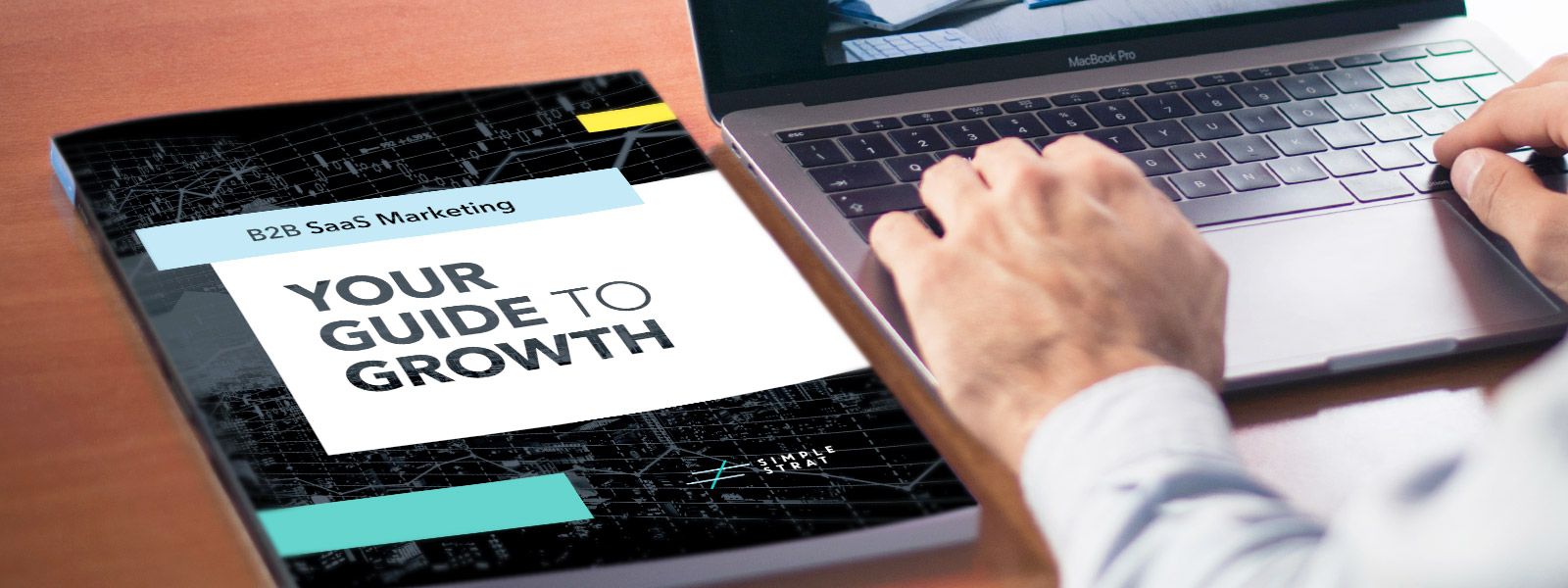B2B SaaS Marketing: Your Guide to Growth

This is the level of information provided by an ICP. It’s a good start, but it’s not enough to truly engage and connect with someone. Now imagine that you have a detailed understanding of their interests, motivations, challenges, and goals. This is the level of information provided by a buyer persona. It allows you to tailor your messaging, content, and strategies to resonate with your target audience on a deeper level.
Once you have developed detailed buyer personas, you can begin to craft a targeted acquisition strategy. Here are some key tactics to consider:
- Content Marketing: Create high-quality, valuable content that speaks directly to the pain points and challenges of your target audience. This could include blog posts, whitepapers, case studies, videos, and more. Distribute this content through channels where your audience is likely to consume it, such as social media, industry forums, and email newsletters.
- SEO: Optimize your website and content for search engines to improve your visibility in organic search results. Conduct keyword research to identify the terms your target audience is searching for and incorporate them strategically into your content.
- PPC Advertising: Use pay-per-click advertising platforms like Google Ads to target specific keywords and audiences. Create compelling ad copy and landing pages that drive visitors to take a desired action, such as signing up for a free trial or requesting a demo.
- Social Media Marketing: Engage with your target audience on social media platforms like LinkedIn, Twitter, and Facebook. Share relevant content, participate in industry discussions, and interact with followers to build relationships and establish credibility.
- Email Marketing: Build and segment your email list to deliver personalized, targeted messages to different segments of your audience. Use email automation to nurture leads through the sales funnel and encourage them to take the next step.
- Partnerships and Alliances: Collaborate with complementary businesses or influencers in your industry to reach a larger audience and tap into their networks. This could involve co-hosting webinars, cross-promoting content, or offering joint discounts or promotions.
By combining these tactics and tailoring them to your specific buyer personas, you can create a comprehensive acquisition strategy that attracts high-quality leads and drives conversions. Remember to track and analyze your results to identify what’s working and make adjustments as needed to optimize your performance.
Monetization: How to Convert Leads into Paying Customers
Once you’ve attracted leads to your B2B SaaS company, the next step is to convert them into paying customers. This process, known as monetization, is critical to the success and growth of your business.
Monetization involves guiding leads through the sales funnel, from awareness and consideration to decision and purchase. To effectively monetize your leads, you need to understand their needs, address their concerns, and demonstrate the value of your product or service.
Here are some key strategies to help you monetize your leads effectively:
- Lead Nurturing: Develop a lead nurturing strategy that guides leads through the sales funnel with personalized, targeted content. Use email automation, retargeting ads, and personalized messaging to keep leads engaged and moving towards conversion.
- Free Trials and Demos: Offer free trials or demos of your product to give leads a hands-on experience and demonstrate its value. Provide personalized onboarding support and follow-up to help leads get the most out of their trial and make an informed purchase decision.
- Pricing Strategy: Develop a pricing strategy that aligns with the value of your product and the needs of your target audience. Consider offering tiered pricing plans, discounts for annual subscriptions, or add-on features to appeal to different customer segments.
- Customer Success: Focus on customer success by providing ongoing support, training, and resources to help customers achieve their goals with your product. Monitor customer satisfaction, gather feedback, and address any issues or concerns promptly to build loyalty and retention.
- Upselling and Cross-Selling: Identify opportunities to upsell or cross-sell additional products or features to existing customers. Use customer data and behavior to personalize your offers and make relevant recommendations that add value and drive revenue.
- Referral Programs: Encourage satisfied customers to refer their colleagues or contacts to your company through a referral program. Offer incentives, rewards, or discounts for successful referrals to motivate customers to spread the word and help you acquire new business.
By implementing these strategies and focusing on building strong relationships with your leads and customers, you can improve your monetization efforts and increase your conversion rates. Remember to track key metrics like conversion rates, average revenue per customer, and customer lifetime value to measure the effectiveness of your monetization strategies and make data-driven decisions to optimize your results.
Retention: How to Keep Customers Engaged and Loyal
Customer retention is a critical component of a successful B2B SaaS business. Retaining existing customers is often more cost-effective and profitable than acquiring new ones, making it essential to focus on keeping your customers engaged, satisfied, and loyal.
Retention involves building strong relationships with your customers, understanding their needs and preferences, and providing ongoing value and support to encourage long-term loyalty. By investing in customer retention, you can increase customer lifetime value, reduce churn, and drive sustainable growth for your business.
Here are some key strategies to help you improve customer retention and maximize the lifetime value of your customers:
- Customer Onboarding: Provide a seamless onboarding experience for new customers to help them get up and running quickly and easily. Offer personalized training, resources, and support to ensure customers understand the value of your product and how to use it effectively.
- Customer Support: Offer responsive, helpful customer support to address any issues or concerns that customers may have. Provide multiple channels for communication, such as phone, email, live chat, and self-service portals, to make it easy for customers to get the help they need.
- Customer Feedback: Gather feedback from customers through surveys, reviews, and direct communication to understand their satisfaction levels and identify areas for improvement. Use this feedback to make data-driven decisions and implement changes that enhance the customer experience.
- Customer Engagement: Keep customers engaged with your product by providing regular updates, new features, and educational content. Encourage customers to interact with your brand through events, webinars, user groups, and community forums to foster a sense of belonging and loyalty.
- Customer Success Programs: Develop customer success programs that focus on helping customers achieve their goals and derive maximum value from your product. Offer personalized recommendations, best practices, and strategic guidance to support customers in their journey and drive retention.
- Renewal Strategies: Implement proactive renewal strategies to encourage customers to renew their subscriptions or contracts. Offer incentives, discounts, or exclusive offers to reward loyalty and incentivize long-term commitment.
By prioritizing customer retention and implementing these strategies, you can build a loyal customer base that generates recurring revenue, referrals, and advocacy for your business. Remember to track key retention metrics like churn rate, retention rate, and customer satisfaction scores to monitor the health of your customer relationships and identify opportunities for improvement.
Overall, mastering the B2B SaaS marketing funnel requires a deep understanding of your target audience, a focus on building strong relationships with leads and customers, and a commitment to continuous optimization and improvement. By following the strategies outlined in this guide and staying agile and adaptable in your approach, you can scale your B2B SaaS business and drive sustainable growth in a competitive and rapidly evolving market.
The B2B software as a service (SaaS) industry is a rapidly growing and competitive market, with companies vying for the attention and business of potential customers. In this article, we explore the key strategies and tactics that B2B SaaS marketers can use to perfect their acquisition, monetization, and retention strategies to scale their business successfully.
The B2B SaaS marketing funnel is a crucial framework that guides companies through the process of attracting, converting, and retaining customers. In the acquisition phase, marketers focus on generating awareness and earning new users by creating high-quality content, optimizing for search engines, using pay-per-click advertising, engaging on social media, and leveraging email marketing. Developing detailed buyer personas is essential for understanding target audiences and tailoring marketing strategies to resonate with them on a deeper level.
Monetization is the next step in the process, where leads are converted into paying customers. Lead nurturing, offering free trials and demos, developing a pricing strategy, focusing on customer success, and implementing upselling and cross-selling tactics are key strategies for effectively monetizing leads. By providing personalized experiences and demonstrating the value of the product, companies can increase conversion rates and drive revenue growth.
Customer retention is a critical component of a successful B2B SaaS business, as retaining existing customers is often more cost-effective and profitable than acquiring new ones. Building strong relationships with customers, providing exceptional customer support, gathering feedback, fostering customer engagement, and implementing customer success programs are essential strategies for improving customer retention and maximizing customer lifetime value. By focusing on keeping customers engaged, satisfied, and loyal, companies can drive sustainable growth and build a loyal customer base that generates recurring revenue and referrals.
In conclusion, mastering the B2B SaaS marketing funnel requires a deep understanding of target audiences, a focus on building strong relationships with leads and customers, and a commitment to continuous optimization and improvement. By following the strategies outlined in this guide and staying agile and adaptable in their approach, B2B SaaS companies can scale their business and drive sustainable growth in a competitive and rapidly evolving market. Marketing is all about connecting with your target audience in a way that inspires emotion or action. But how can you be confident that your message will truly resonate with your audience? The key lies in creating thorough and accurate personas.
Imagine knowing exactly what your ideal customer’s day-to-day life looks like, what their top aspirations are, what keeps them up at night, and where they turn for information. With this level of insight, crafting a compelling marketing message becomes much easier, and the chances of it connecting with your audience increase significantly.
When you have a deep understanding of your target market, you can tailor your marketing efforts to align with their preferences and needs. This is where personas come into play. By creating detailed personas that represent your ideal customers, you can ensure that your messaging, tone, and content resonate with those individuals.
For B2B SaaS marketers, understanding your target audience is crucial for success. Knowing where your ideal customers spend their time online, what topics interest them, and what challenges they face can help you choose the best marketing channels for reaching them.
Content marketing is a powerful tool for B2B SaaS companies, allowing you to showcase your expertise and build trust with your audience. By creating high-quality, evergreen content that addresses the key issues your target market is facing, you can attract and engage potential customers at every stage of the buyer’s journey.
Search advertising, social media, remarketing, event marketing, account-based marketing, partnerships, affiliate marketing, and word-of-mouth referrals are all effective channels for reaching B2B SaaS customers. Each of these channels offers unique opportunities to connect with your target audience and drive action.
Ultimately, the key to successful marketing lies in understanding your audience on a deep level and tailoring your strategies to meet their needs. By creating detailed personas, you can ensure that your marketing efforts are targeted, relevant, and effective in inspiring emotion and action among your ideal customers. On the other hand, a simpler product may be better suited for a self-service model where customers can easily make a purchase online without the need for human interaction.
When choosing a sales model, consider the following factors:
1. Product complexity: How much explanation or guidance does your product require for customers to understand its value and how to use it effectively?
2. Price point: Higher priced products may require a more hands-on sales approach to build trust and demonstrate value.
3. Customer preferences: Some customers may prefer to make purchases online without speaking to a salesperson, while others may require more personalized attention.
4. Company resources: Consider the resources and expertise available within your organization to support different sales models.
Ultimately, the goal of your sales model is to make it as easy as possible for customers to purchase your product while providing the necessary support and guidance to ensure they have a positive experience.
In conclusion, a successful SaaS growth strategy requires a combination of effective customer acquisition tactics, a well-thought-out pricing strategy, and a sales model that aligns with your product and customer needs. By incentivizing referrals, sharing valuable content, and optimizing your pricing and sales approach, you can drive growth and maximize revenue for your SaaS business. Remember to continuously evaluate and iterate on your strategies to stay ahead in the competitive SaaS market. It’s important to take action based on the insights you gain from analyzing your churn data. Here are some steps you can take to address churn and improve customer retention:
1. Improve Product Quality: If customers are churning due to a buggy or unstable product, prioritize fixing these issues to provide a better user experience. Regularly gather feedback from customers to identify areas for improvement.
2. Enhance Customer Value: Ensure that customers are realizing the full value of your product by providing ongoing support and resources. Offer training sessions, webinars, and tutorials to help customers make the most of your product.
3. Increase Adoption Rates: Encourage customers to fully utilize your product by highlighting key features and benefits. Provide personalized recommendations based on their usage patterns to drive engagement.
4. Target the Right Customers: Make sure you are targeting the right customer segments that align with your product offering. Tailor your marketing and sales efforts to attract customers who are most likely to benefit from your product.
5. Review Pricing and Packaging: Evaluate your pricing strategy to ensure it is competitive and aligned with customer expectations. Consider offering different pricing tiers or packages to cater to a wider range of customers.
6. Address Payment Issues: Keep track of customer payment information to prevent churn due to expired credit cards or missed payments. Send reminders to customers before their subscription expires and make it easy for them to update their payment details.
By taking proactive steps to address the root causes of churn, you can improve customer retention and drive long-term success for your SaaS business. Remember that retaining existing customers is often more cost-effective than acquiring new ones, so prioritizing customer satisfaction and loyalty is key to sustainable growth. When it comes to SaaS marketing success, combining quantitative data with qualitative information is crucial. Your engagement scores and Net Promoter Score (NPS) data can provide valuable insights into how your customers are interacting with your product and their overall satisfaction levels. By analyzing this data and addressing any red flags that arise, you can make informed decisions that will help you create a product that your customers love.
However, it’s important not to overlook the role of your support team in this process. Providing excellent customer service and continuously improving your product go hand in hand. When you pair a high-quality product with a memorable customer experience, your software will essentially sell itself.
To improve SaaS retention, consider the following tips:
1. Provide thorough onboarding processes to help customers understand the benefits of your product.
2. Build trusted relationships with your customers by setting realistic expectations and maintaining open communication.
3. Address known causes of churn by listening to customer feedback and continuously improving your product.
4. Stay in touch with your customers regularly and personalize your communications to show that you value their business.
5. Prove your value by offering solutions when issues arise, and be proactive in resolving any problems.
In conclusion, the marketing funnel can be a valuable framework for building or optimizing a B2B SaaS marketing strategy. By understanding your customers, optimizing your pricing, and addressing reasons for churn, you can set yourself up for success and rapid growth.
FAQs:
1. How important is customer feedback in SaaS marketing?
Customer feedback is essential in SaaS marketing as it provides valuable insights into customer satisfaction, areas for improvement, and reasons for churn. By listening to customer feedback, you can make informed decisions that will help you retain customers and grow your business.
2. What role does the support team play in SaaS marketing success?
The support team plays a crucial role in SaaS marketing success by providing excellent customer service and addressing customer concerns. A strong support team can help improve customer satisfaction, retention rates, and overall success of the product.
3. How can SaaS companies optimize their pricing strategies?
SaaS companies can optimize their pricing strategies by understanding their target market, conducting pricing experiments, and analyzing customer feedback. By finding the right balance between value and affordability, SaaS companies can attract and retain customers effectively.
4. What are some common causes of churn in SaaS businesses?
Common causes of churn in SaaS businesses include poor onboarding processes, lack of communication, product issues, and pricing concerns. By addressing these issues proactively, SaaS companies can reduce churn rates and improve customer retention.
5. Why is it important to personalize communications with customers in SaaS marketing?
Personalizing communications with customers in SaaS marketing shows that you value their business and understand their individual needs. By establishing a personal connection with customers, you can build loyalty, trust, and long-term relationships that will benefit your business in the long run. the benefits of meditation for mental health
Meditation is a practice that has been around for thousands of years, but its benefits for mental health are just beginning to be truly understood. In recent years, there has been a surge of scientific research showing how meditation can positively impact our mental well-being. From reducing stress and anxiety to improving focus and creativity, the benefits of meditation for mental health are vast and varied.
One of the key ways that meditation can benefit mental health is by reducing stress. In today’s fast-paced world, stress has become a common problem for many people. Chronic stress can lead to a variety of mental health issues, including anxiety and depression. Meditation has been shown to activate the body’s relaxation response, which can help to reduce stress levels and promote a sense of calm and well-being.
In addition to reducing stress, meditation can also help to improve anxiety symptoms. Studies have shown that regular meditation practice can lower levels of anxiety and improve overall feelings of well-being. By focusing on the present moment and practicing mindfulness, individuals can learn to better manage their anxiety and prevent it from spiraling out of control.
Meditation can also be a powerful tool for improving focus and concentration. In today’s digital age, many people struggle with distractions and difficulty concentrating. By practicing meditation regularly, individuals can learn to quiet the chatter of the mind and improve their ability to focus on the task at hand. This can lead to increased productivity and a greater sense of accomplishment.
Furthermore, meditation has been shown to improve creativity and problem-solving skills. By quieting the mind and allowing space for new ideas to emerge, individuals can tap into their creative potential and come up with innovative solutions to challenges. Whether you are an artist, writer, or business professional, meditation can help to unlock your creative energy and inspire new ideas.
Overall, the benefits of meditation for mental health are numerous and far-reaching. By incorporating meditation into your daily routine, you can experience reduced stress and anxiety, improved focus and concentration, and enhanced creativity. Whether you are new to meditation or have been practicing for years, there is always something new to learn and gain from this ancient practice. Take the time to explore the benefits of meditation for your mental health and see how it can positively impact your life.




